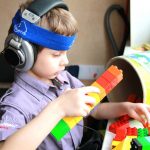The ship was full and many things were happening. Lives were connecting and the journey was on its way. The captain was steering the ship when he noticed the tip of the iceberg in his path. He did attempt to mobilize the ship around this mound of ice and felt comforted by his efforts. He did not foresee what was lying underneath the surface of the waters he was navigating. Underneath the surface was a huge amount of ice that eventually caused the destruction of the Titanic.
No, I do not want you to think about destruction, but simply think about what it is that you see, and what you do not see. We feel safe in what we can observe and see in Karl, because we can analyze that and we think we can find ways to intervene. But then we try our interventions and for some reason what we thought we saw does not quite work out the way that we logically thought it would. The difference is in what is lying underneath the surface.
The iceberg below the surface is all of the developmental pieces that have to come together in order to execute and learn efficiently. What we see now is a direct result of Karl’s understanding of his own body and his own way of interpreting the world. What we do not see is where it is coming from. If we simply attempt to navigate around the tip, we are frequently disappointed in our efforts and we jump from one intervention to another, thinking the intervention is at fault. It frequently is not the intervention, but the timing of the intervention.
What is a developmental delay? On paper we state that Karl may be 1 or 2 years behind in reading, math or social maturity to name a few, but what are we actually saying? Why is it a “developmental” delay? Because quite simply Karl’s nervous system has not matured to the level commensurate to his peers. Why do we keep insisting he must look, behave and learn like his peers on the very same activities that his peers are doing? How are we matching Karl? At what level of development does he feel most comfortable to learn from at this moment in time?
What we see now is a direct result of Karl’s understanding of his own body and his own way of interpreting the world. What we do not see is where it is coming from.
So many families believe in tally sheets of checking off that their “Karl’s” have gotten 8 out of 10 today or 5 out of 6 trials today and I frequently wonder at the functionality of it all. If Karl is working away at an activity or an expectation beyond the maturity of his central nervous system, what does these tally sheets matter? Are we training his cognitive brain to do what his central nervous system disallows him to do? Is the only answer we have for him to cope and accommodate his system rather than to remediate and alleviate the pressure of the developmental delay? What does it matter if Karl can memorize aspects rotely and can learn to do something in a certain way, but it holds no meaning for him to generalize this same skill in a different time, space or environment.
The brain is far more complex than simply looking at Karl’s learning behavior. He is more than that and he deserves to be known at the level commensurate to his maturity level. The beauty of matching his developmental level is that you can apply targeted intervention aimed at the more precise point of origin and have far longer lasting success that comes from within and enables Karl to chip away at the iceberg underneath the surface himself and navigate his own ship through the murky waters of uncertainty, slower processing speed and gray areas of social-emotional maturity that is so hard to teach.
In the next couple of blogs I am going to focus on different aspects of executive functioning and what is necessary to develop these areas of function.
May your journey be fruitful in 2017!
Maude








